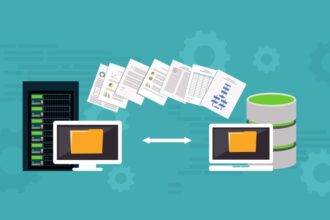An occasional series in which a review of recent posts on SmartData Collective reveals the following nuggets:
Say cheese
News reaches us from Italy that there is a solution to this problem. Rather than subjecting each and every customer to the risk rating process, Credito Emiliano, a regional bank in Northern Italy, simply accepts a fairly durable commodity as collateral: parmesan cheese. According to Bloomberg, Credito Emiliano keeps cheese worth about 132 million Euros in its climate-controlled “vaults” – a considerable sum. For the producers, that’s very convenient. They can borrow money to make their cheese and pay back the loan up to two years later – which is about the time it needs to mature. For the bank, there is very little risk: in case of a default, it can simply sell the precious parmesan.
It’s a balancing act
Balanced KPIs keep people focused on what they should be doing, what they can do with their information, as well as providing balance between conflicting goals. They should also be based on multiple measures not just financial ones. Performance Management joins Process Management and Decision Management …
An occasional series in which a review of recent posts on SmartData Collective reveals the following nuggets:
Say cheese
News reaches us from Italy that there is a solution to this problem. Rather than subjecting each and every customer to the risk rating process, Credito Emiliano, a regional bank in Northern Italy, simply accepts a fairly durable commodity as collateral: parmesan cheese. According to Bloomberg, Credito Emiliano keeps cheese worth about 132 million Euros in its climate-controlled “vaults” – a considerable sum. For the producers, that’s very convenient. They can borrow money to make their cheese and pay back the loan up to two years later – which is about the time it needs to mature. For the bank, there is very little risk: in case of a default, it can simply sell the precious parmesan.
It’s a balancing act
Balanced KPIs keep people focused on what they should be doing, what they can do with their information, as well as providing balance between conflicting goals. They should also be based on multiple measures not just financial ones. Performance Management joins Process Management and Decision Management as a “higher power,” one of the levers of improved enterprise performance. Performance management also helps bring BI from departmental usage, focused on reporting, to enterprise-driven metrics and best practices.
Those damn signals
One of the interesting challenges we face as both developers and consumers of search technology is that social signals are a double-edged sword. On one hand, social signals have proven essential in distinguishing signal from noise – be they links, re-tweets, or any number other ways that online consumers (or more correctly “prosumers”) actively and passively communicate value judgments about information. On the other hand, our reliance on these social signals makes us vulnerable to positive feedback and spammers.
Pick the moment
Today, companies manage spending tightly, looking at the expenses and revenue each fiscal quarter and each month to optimize the all-important operating income (revenue minus expenses equals operating income). If sales and revenue are weak, management gets miserly. On the other hand, if revenue is high and expenses are low, your high-ROI proposal will have a better chance for approval. For many people, this corporate reality is hard to deal with. Logical thinkers would suggest that if something is broken, it should be fixed, no matter how well the sales team is performing. The people who run your business have their first priorities set on stockholder value. You too should pay attention to your company’s sales figures as they are announced each quarter. If your company has a quarterly revenue call, use it to strike when the environment for spending is right.
Retailing change afoot…
In the early 2000s, as they struggled to implement customer loyalty programs and endured criticism for over-investing in CRM technologies, retailers curtailed their IT spending. They had data warehouses—often several—and kept their attention focused on enterprise applications and e-business capabilities. With the exception of some beleaguered grocers and a sprinkling of catalog companies, we didn’t see many retailers spending on either consulting services or new software solutions. But things are changing in retail, due in large part to five key areas that retailing executives have earmarked as strategic priorities…
Shall we dance?
The
Oscar-winning sound designer Walter Murch, speaking Friday night at the
Rafael Film Center in San Rafael California, told about talking shop
with Michael Jackson’s engineers. They told Murch that they had no
special insight, they just tried one mix after another as Jackson sat
in the back, silent. They knew they had it right when he got up and
danced. The other way was the General Motors way. They took forever,
and sometimes simply stopped trying when the bureaucracy’s deadline
came. A recent New York Times article explains why GM cars never made
anyone want to dance, or at least not me.
Ready for change
Assessing your change capacity will help you know where you stand before the beginning of the change journey. It may also help you finding the right depth of the change by comparing different change capacity results for different depths: for what change depth will the results expected, and therefore the stakeholder attractiveness, most outweigh the efforts required by the impact?






